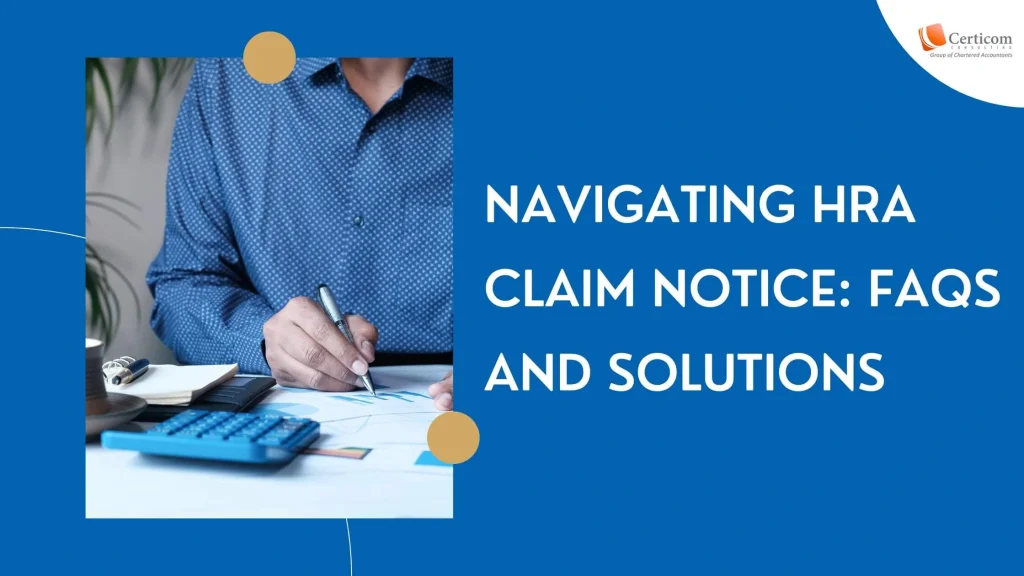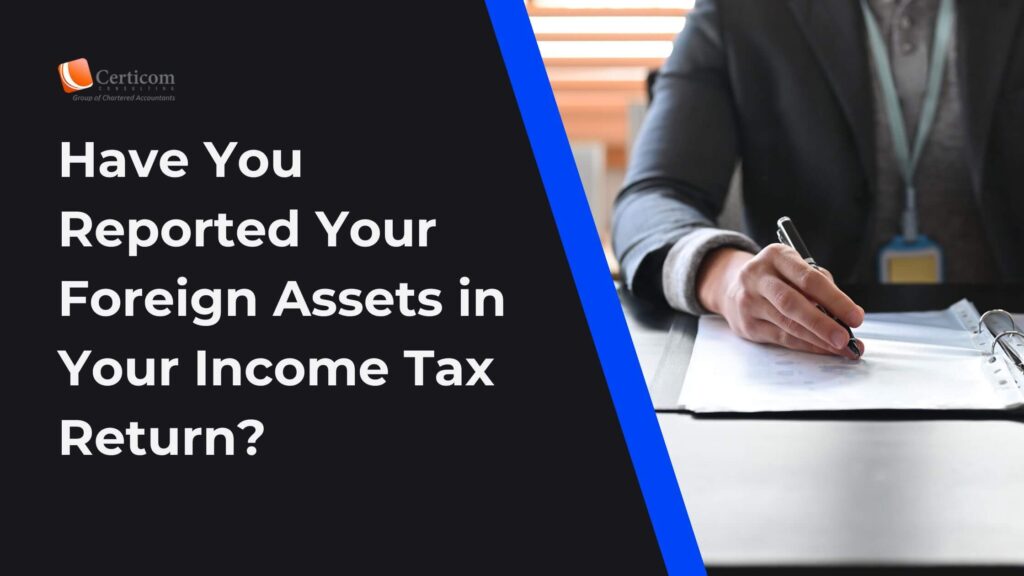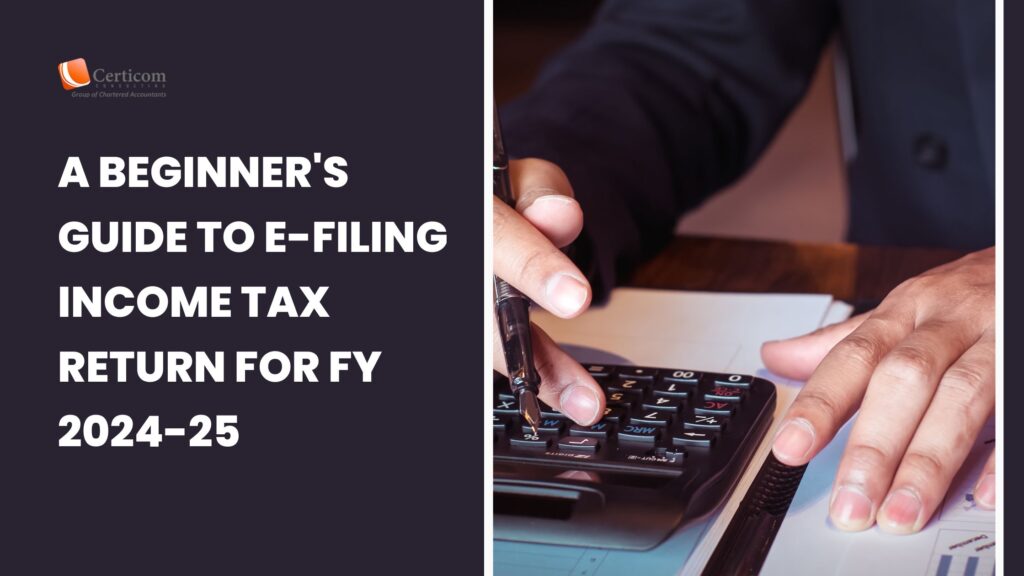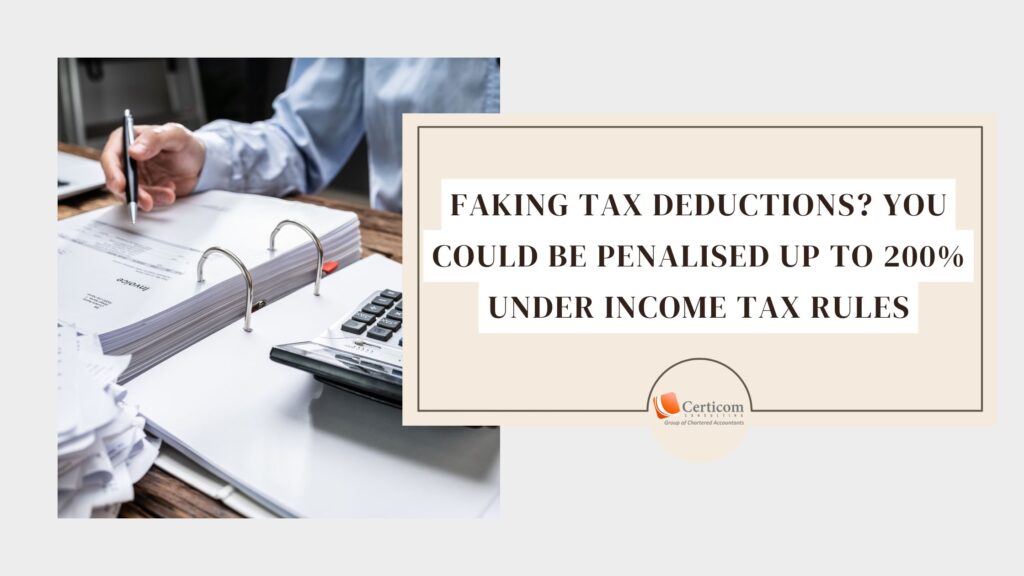Navigating HRA Claim Notice: FAQs and Solutions

The Income Tax Department has recently issued notices to taxpayers who have claimed House Rent Allowance (HRA) deductions exceeding ₹5 lakh in their Income Tax Returns (ITR). These notices request verification of HRA claims for the past three years, citing non-compliance with TDS provisions under Section 194IB.
Understanding Section 194IB: TDS on Rent Payments
Section 194IB mandates TDS deductions on rent payments under the following conditions:
Applicable to individuals and Hindu Undivided Families (HUFs) who are not required to undergo a tax audit under Section 44AB.
Triggered when the monthly rent exceeds ₹50,000 (even for a partial month).
The TDS rate is 5%, reducing to 2% effective October 1, 2024.

How the Tax Department Identifies Non-Compliance
The tax authorities utilize data analytics to detect non-compliance. The process includes:
Identifying High HRA Claims: Cases where the HRA deduction surpasses ₹5 lakh are flagged.
Verifying TDS Deduction: A cross-check is conducted to determine whether the taxpayer has deducted and deposited TDS using Form 26QC.
Issuing Notices: Emails are sent to taxpayers who have not complied with TDS provisions while claiming substantial HRA deductions.
This move underscores the department’s commitment to closing tax loopholes by leveraging the Annual Information Statement (AIS) to monitor discrepancies and enforce compliance.
What to Do If You Receive an HRA Notice
1. If You Have Incorrectly Claimed HRA Without Paying Rent
If HRA was claimed without actually paying rent, the best course of action is to file an updated return, rectify the claim, and pay any additional tax due. Ignoring the issue could result in penalties of up to 200% of the tax amount, causing financial strain and stress.
2. If You Have Genuinely Paid Rent
For those who have legitimately paid rent but have not deducted TDS, the situation is more complex. The two main options are:
A. Paying TDS on Rent by Filing Form 26QC (with Interest & Penalty)
Increased Financial Outflow: Interest and penalty charges will apply.
Recovering TDS from the Landlord: If full rent has already been paid, reclaiming the TDS amount from the landlord can be difficult, particularly if:
The lease has ended.
The tenant has relocated.
There is no amicable relationship with the landlord.
Challenges for the Landlord: Even if the landlord agrees to reimburse the TDS, they may struggle to claim the credit in their ITR if the deadline for filing a revised return has passed.
B. Revising Your HRA Claim by Filing an Updated Return
Additional Financial Burden: Revising the return entails additional tax payments along with interest and penalties.
Ongoing TDS Liability: Even after revising the HRA claim, the taxpayer remains responsible for TDS deduction if rent was actually paid. Simply removing the HRA deduction does not absolve one from TDS obligations.
An Alternative to Avoid Being Deemed as an Assessee-in-Default
A provision under the Income Tax Act allows taxpayers to avoid being classified as an assessee-in-default even without deducting TDS. According to the first proviso to Section 201(1), a taxpayer will not be considered in default if the landlord:
Has filed their ITR.
Has included rental income in their total income.
Has paid the required tax on such income.

How to Avail This Benefit?
To leverage this provision, the taxpayer must obtain a Chartered Accountant (CA) certificate from the landlord, confirming that the rental income has been reported in their ITR and the necessary tax has been paid. Upon submission of this certificate to the tax department, the taxpayer will no longer be treated as a defaulter, although they may still be required to pay interest under Section 201(1A) for the delay.
Key Takeaways
The recent scrutiny of high HRA claims reflects the tax department’s increasing reliance on data analytics for enforcement.
Taxpayers receiving such notices must act promptly by evaluating their situation and choosing the most suitable course of action.
Ensuring TDS compliance on rent payments and maintaining proper documentation can prevent future tax complications.
If TDS was not deducted, obtaining a CA certificate from the landlord can provide relief from being deemed an assessee-in-default.
By staying informed and proactive, taxpayers can effectively manage their tax liabilities and avoid unnecessary scrutiny from tax authorities.
Related Post
A Beginner’s Guide to E-Filing Income Tax Return for FY 2024-25
Faking Tax Deductions? You Could Be Penalised Up To 200% Under Income Tax Rules
Book A One To One Consultation Now For FREE
How can we help? *




